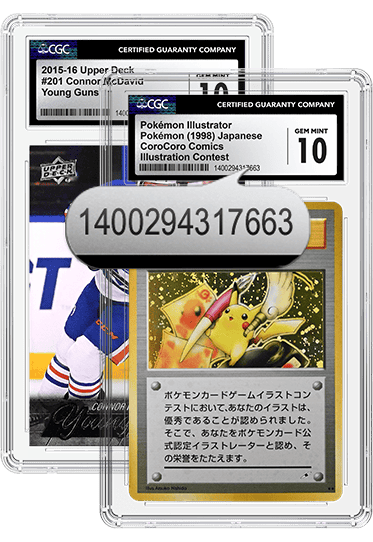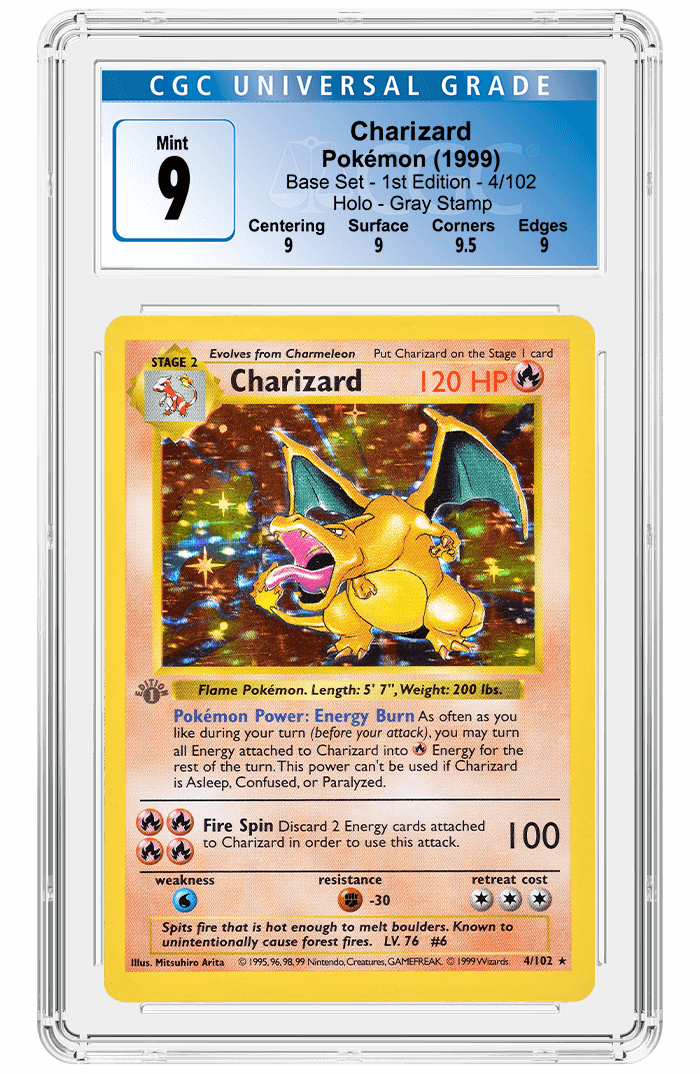Rare Pokémon Prototype Cards Graded by CGC Trading Cards
Posted on 01/06/2023
Every so often, CGC Trading Cards has the honor of certifying a truly special group of cards that aren't seen every day. A recent example is a group of stunning prototype cards from the early days of the Pokémon Trading Card Game, which was submitted by someone who obtained them directly from a Pokémon play tester.
The submission includes playtest cards of the three Kanto starter Pokémon: Bulbasaur, Charmander and Squirtle. These cards were created to finalize the mechanics of the game before it launched in Japan. According to the original play tester, these prototypes were produced about seven months before the official release of the Pokémon TCG in Japan, which came out in October 1996. They were clearly well-used, as Bulbasaur received a grade of CGC 5.5, while Charmander and Squirtle each received a grade of CGC 7.5.
 |
 |
 |
| Due to the cards' odd size, they are further protected inside the CGC Trading Cards holder with an inner sleeve. Click images to enlarge. |
||
Several changes were made to the Pokémon TCG cards between the time that these prototypes were printed and the release of the Japanese Base Set seven months later. One of the most obvious changes was that Ken Sugimori's Pokémon artwork was replaced with artwork by Mitsuhiro Arita for the official release, and background artwork was added. Rarity symbols were also an addition to the final production, although the earliest printing of Base Set lacked them. Additionally, the white borders present on the prototype cards were changed to a goldish yellow.
Interestingly, the prototype cards also included "habitat" information above the Pokémon's Pokédex entry in the white box in the lower right-hand corner of the card, above the line break. Bulbasaur is noted as being found in 森, or the forest, Squirtle is from 海, or the sea, and Charmander is from 草原, or grassland. This feature was removed, and it isn't clear whether habitats would have had an impact on how the TCG is played.
Each of the three play test cards is made from paper mounted on cardstock — a common practice when producing prototype TCG cards for playtesting purposes. The cards are the same height as normal TCG cards, but are much narrower.
CGC Trading Cards left no stone unturned when authenticating these rare playtest cards. First, the graders tested them using all of the state-of-the-art technology at CGC Trading Cards' disposal to determine the inherit properties of the cards. Similar to the examination of the Test Print Blastoise cards, these cards were forensically imaged under numerous types of lighting sources. Above, see how the three cards all react the same way to the infrared spectrum of light. The light is being cast at a low angle in the photo, allowing for the structure of the cards to be examined. The cards were all found to react in the same way with relation to one another for many other types and spectrums of light.
After visual examination, the cards were also scanned using a top-of-the-line X-ray fluorescence (XRF) scanner to examine the chemical composition of the paper and ink of the cards. The chart below shows that the three cards all contain the same levels of Calcium, Titanium, Iron and Copper. The tests are very helpful in proving that the cards all originated from the same source. However, CGC Trading Cards did not have access to additional known genuine examples for forensic analysis. The research department stepped in here.
 |
CGC Trading Cards' researchers found photos posted online by an individual intimately involved in the creation of the Pokémon TCG. The photo shows a very similar Bulbasaur, along with other early Pokémon playtest cards. Most appear to be constructed the same way with paper applied to cardstock. Finally, CGC Trading Cards conducted an interview in Japanese with a person close to the creation of the Pokémon TCG. They too confirmed that the cards were legitimate and provided information about the timing of their creation.
 |
"It's not every day that you see such an incredible piece of TCG history, let alone three," said Matt Quinn, Vice President of CGC Trading Cards. "CGC Trading Cards is honored to have graded these Pokémon TCG playtest cards, and we look forward to seeing where their journey takes them next."
Stay Informed
Want news like this delivered to your inbox once a month? Subscribe to the free CGC eNewsletter today!







